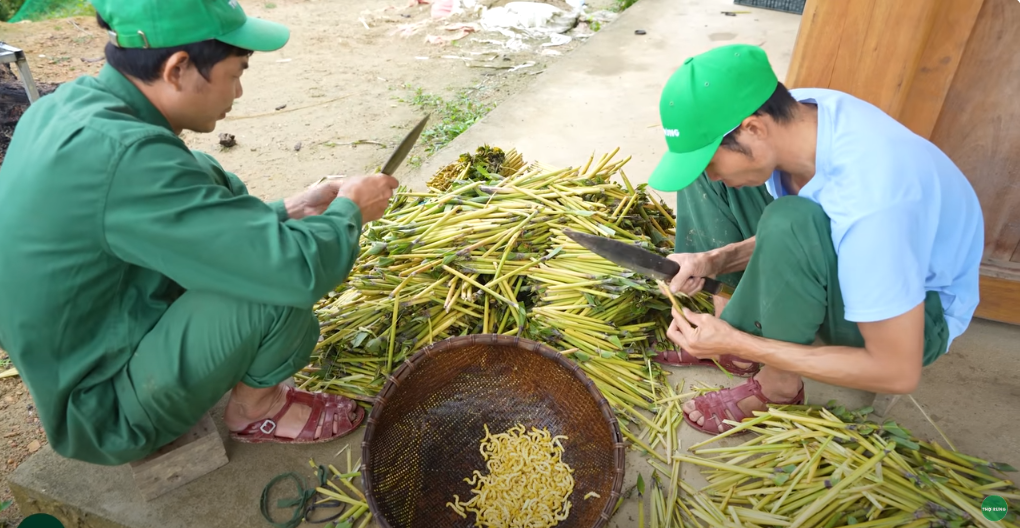Sâu chít is a type of larva that is found inside the stems of certain plants, particularly in the species of the genus Thitarodes, which is a type of ghost moth. These larvae are parasitic and typically infest plants like the "chít" tree (a type of bamboo or grass). The larvae are highly valued in traditional medicine, especially in Vietnam and some other Asian countries, due to their believed health benefits.
Sâu chít is often harvested and used as an ingredient in medicinal preparations or as a health supplement, believed to improve vitality, boost the immune system, and enhance energy levels. It's sometimes referred to as "Vietnamese Cordyceps" because of its similarity to the well-known Chinese Cordyceps sinensis.

Sâu chít typically emerges in late autumn and early winter, with the harvesting season lasting about four months. During this period, locals venture into the forests to search for chít plants and collect the larvae.
The larvae are plump, milky-white, and wriggle inside the plant stems. After being harvested, they are placed in a diluted alcohol solution to prevent deterioration and to expel any impurities from their bodies.

Depending on the intended use, sâu chít can be consumed fresh or dried. Fresh sâu chít typically sells for 800,000 to 1 million VND per kilogram, while the dried version fetches an even higher price, often reaching millions of VND.
Fresh sâu chít is used to prepare a variety of dishes, such as roasted, grilled, or stir-fried with eggs. In some areas, it is also incorporated into porridge, sticky rice, or served as a side dish. One of the most popular and delicious dishes is sâu chít stir-fried with lemon leaves - a simple yet flavorful preparation that highlights the larvae's rich, creamy texture and fragrant aroma.
 |
 |
Although many first-time diners may be hesitant or even apprehensive when they first encounter sâu chít, its rich, buttery, and slightly sweet flavor quickly wins over even the most discerning palates.
Beyond its culinary appeal, sâu chít is also revered as a "miracle tonic" with numerous health benefits.

In traditional medicine, sâu chít is believed to have a warm, sweet flavor and is used to strengthen the lungs, kidneys, and calm the mind. It is often prescribed for treating kidney deficiencies and related symptoms.
Sâu chít is also used to treat ailments such as coughs, asthma, and blood-spitting, and is thought to be effective in addressing kidney yang deficiency. Many people believe it enhances vitality and refer to it as a "bedroom elixir."
However, Dr. Hoang Sam, Chairman of the Institute of Traditional Medicine of Vietnam, advises caution. While there is no scientific evidence to support claims that sâu chít boosts sexual potency, it is indeed rich in nutrients.
The larvae contain 30% protein and 17 essential amino acids, with concentrations three times higher than those found in cordyceps. While sâu chít can be used as a health-boosting food, it should not be overused to avoid potential allergic reactions or anaphylactic shock.
Thao Trinh